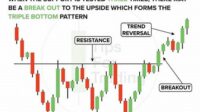Mastering Stocks with Moving Averages: A Guide to Understanding Indicators provides valuable insights into leveraging moving averages to analyze stock market trends and make informed trading decisions. Moving averages are technical indicators that smooth out price fluctuations, revealing the underlying trend of a stock’s price action. By studying moving averages, traders can identify potential buy and sell signals, gauge market momentum, and assess the strength and direction of trends.
Moving averages play a crucial role in technical analysis due to their simplicity, effectiveness, and adaptability. They can be applied to various time frames, allowing traders to analyze short-term price movements as well as long-term trends. Moreover, moving averages can be combined with other technical indicators to enhance analysis and increase the accuracy of trading signals.
This comprehensive guide delves into the different types of moving averages, including simple moving averages (SMAs), exponential moving averages (EMAs), and weighted moving averages (WMAs). It explains how to calculate, interpret, and apply moving averages to real-world trading scenarios. The guide also covers advanced concepts such as moving average convergence divergence (MACD), which combines multiple moving averages to identify potential trading opportunities.
Mastering Stocks with Moving Averages
Moving averages are a fundamental tool for technical analysts, providing insights into price trends and helping to identify trading opportunities. Here are four key aspects of mastering stocks with moving averages:
- Trend Identification: Moving averages help traders identify the overall trend of a stock’s price movement, making it easier to spot potential buy and sell signals.
- Momentum Assessment: By comparing the current price to the moving average, traders can gauge the strength and direction of the current trend.
- Support and Resistance: Moving averages can act as dynamic support and resistance levels, indicating potential areas where the price may bounce or reverse.
- Crossovers and Divergences: Crossovers between different moving averages or divergences between the price and the moving average can provide valuable trading signals.
Understanding and skillfully applying these aspects can greatly enhance a trader’s ability to make informed trading decisions. For example, a trader may use a short-term moving average to identify potential entry and exit points for short-term trades, while using a longer-term moving average to assess the overall trend and make strategic investment decisions. By mastering moving averages, traders can gain a deeper understanding of market dynamics and improve their trading performance.
Trend Identification
Trend identification is a critical aspect of Mastering Stocks with Moving Averages: A Guide to Understanding Indicators. Moving averages play a vital role in this process by smoothing out price fluctuations and revealing the underlying trend. By analyzing the direction and slope of moving averages, traders can assess whether the stock is in an uptrend, downtrend, or sideways trend.
- Identifying Uptrends: When a moving average is sloping upwards, it indicates an uptrend. Traders can look for potential buy signals when the price crosses above the moving average.
- Recognizing Downtrends: Conversely, a downward sloping moving average suggests a downtrend. Traders may consider selling or avoiding the stock when the price falls below the moving average.
- Determining Sideways Trends: If a moving average is relatively flat, it may indicate a sideways trend. In such cases, traders can wait for a breakout above or below the moving average before making a trading decision.
- Confirming Trends: Multiple moving averages with different time frames can be used to confirm trends. For instance, a long-term moving average can provide the overall trend, while a shorter-term moving average can identify shorter-term fluctuations within that trend.
By mastering trend identification with moving averages, traders can increase their understanding of market dynamics and make more informed trading decisions. Moving averages help traders spot potential trading opportunities, manage risk, and ultimately improve their overall trading performance.
Momentum Assessment
Momentum assessment is a crucial aspect of Mastering Stocks with Moving Averages: A Guide to Understanding Indicators. Moving averages provide a dynamic reference point to evaluate the current price action and assess the strength and direction of the prevailing trend.
Traders can gauge momentum by comparing the current price to the moving average. When the price is above the moving average and moving higher, it indicates positive momentum, suggesting that the uptrend is strong. Conversely, when the price falls below the moving average and continues to decline, it signals negative momentum, indicating a strengthening downtrend.
By understanding momentum, traders can make informed decisions about entering or exiting trades. For instance, a trader may enter a long position (buy) when the price crosses above the moving average and momentum is positive, indicating a potential uptrend. Conversely, a trader may exit a long position or initiate a short position (sell) when the price falls below the moving average and momentum turns negative, suggesting a potential downtrend.
Moreover, momentum assessment helps traders identify potential trend reversals. When momentum shifts from positive to negative or vice versa, it may indicate a change in the underlying trend. Traders can use this information to adjust their trading strategies and potentially capitalize on market reversals.
Overall, mastering momentum assessment with moving averages empowers traders to make more informed trading decisions, manage risk, and improve their trading performance.
Support and Resistance
Within the framework of “Mastering Stocks with Moving Averages: A Guide to Understanding Indicators,” the concept of support and resistance plays a crucial role in identifying potential trading opportunities. Moving averages serve as dynamic support and resistance levels, providing valuable insights into price behavior and helping traders make informed decisions.
- Identifying Support Levels: Moving averages can act as support levels, indicating areas where the price may bounce or reverse upwards. When the price falls towards a moving average and finds support, it suggests that buyers are stepping in and pushing the price higher.
- Recognizing Resistance Levels: Moving averages can also act as resistance levels, indicating areas where the price may face resistance and reverse downwards. When the price rises towards a moving average and encounters resistance, it suggests that sellers are becoming more active and pushing the price lower.
- Confirmation and Validation: Multiple moving averages with different time frames can be used to confirm and validate support and resistance levels. This confluence of technical indicators strengthens the reliability of these levels.
- Trading Implications: Identifying support and resistance levels using moving averages allows traders to make informed decisions about potential trading opportunities. Traders may look to buy near support levels and sell near resistance levels, aiming to capitalize on price reversals.
In summary, understanding support and resistance levels derived from moving averages is essential for mastering stocks with moving averages. By utilizing these dynamic levels, traders can enhance their ability to identify potential trading opportunities, manage risk, and improve their overall trading performance.
Crossovers and Divergences
Within the context of “Mastering Stocks with Moving Averages: A Guide to Understanding Indicators,” crossovers and divergences are significant technical analysis tools that offer valuable insights into price behavior and potential trading opportunities.
Crossovers:Crossovers occur when different moving averages intersect, providing signals about potential trend changes. For instance, when a short-term moving average crosses above a long-term moving average, it may indicate a bullish crossover, suggesting a potential uptrend. Conversely, when a short-term moving average crosses below a long-term moving average, it may signal a bearish crossover, suggesting a potential downtrend.
Divergences:Divergences arise when the price movement diverges from the movement of the moving average. A bullish divergence occurs when the price makes higher lows while the moving average makes lower lows, suggesting a potential uptrend. Conversely, a bearish divergence occurs when the price makes lower highs while the moving average makes higher highs, suggesting a potential downtrend.
Understanding crossovers and divergences empowers traders to identify potential trend reversals and make informed trading decisions. By combining these signals with other technical indicators and fundamental analysis, traders can enhance their ability to navigate market fluctuations and improve their trading performance.
Practical Example:Consider a stock where the 50-day moving average (short-term) crosses above the 200-day moving average (long-term). This bullish crossover suggests a potential uptrend. Additionally, if the price has been making higher lows while the 50-day moving average has been making lower lows, this bullish divergence further strengthens the uptrend signal.
Understanding crossovers and divergences is a crucial aspect of mastering stocks with moving averages. By incorporating these concepts into their trading strategies, traders can gain a deeper understanding of market dynamics, identify potential trading opportunities, and make more informed decisions.
Mastering Stocks with Moving Averages
To effectively master stocks with moving averages, consider these assertive tips:
Tip 1: Choose the Right Moving AverageSelect the moving average that best aligns with your trading style and time frame. Short-term averages (e.g., 10-day, 20-day) provide more immediate signals, while longer-term averages (e.g., 50-day, 200-day) offer a broader perspective.Tip 2: Combine Multiple Moving AveragesUsing multiple moving averages with different time frames strengthens trend confirmation and reduces false signals. For instance, a combination of a 50-day and 200-day moving average can provide insights into both short-term and long-term trends.Tip 3: Look for Crossovers and DivergencesCrossovers and divergences between moving averages and price action can indicate potential trend changes or reversals. Monitor these signals to identify potential trading opportunities.Tip 4: Consider Volume and VolatilityVolume and volatility play a crucial role in interpreting moving averages. High volume during a crossover or divergence confirms the strength of the signal. Conversely, low volume may indicate a weaker signal.Tip 5: Use Moving Averages as Dynamic Support and ResistanceMoving averages can act as dynamic support and resistance levels. Identify areas where the price bounces off or reverses from moving averages to anticipate potential price movements.Tip 6: Practice and ExperimentMastering moving averages requires practice and experimentation. Test different moving averages and strategies on historical data or a demo account before implementing them in live trading.Tip 7: Understand Market ContextMoving averages should not be used in isolation. Consider overall market conditions, news events, and fundamental factors to enhance your analysis and decision-making.







